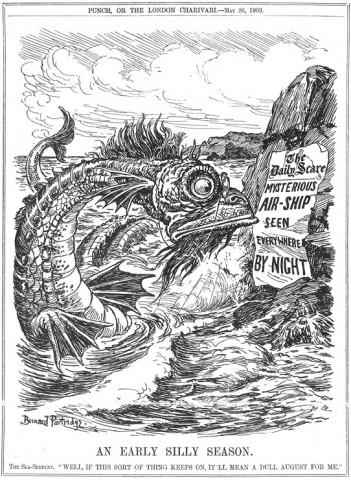Monday, 31 May 1909
No scareships today. But the Standard carries a short article (p. 3) which shows how the airship menace could lie at the nexus of propaganda, advertising and entertainment. This summer’s weekly Brock’s Benefits, a free fireworks display produced by Brock’s Fireworks at the Crystal Palace, will present ‘a scene of an invasion drama of a […]





